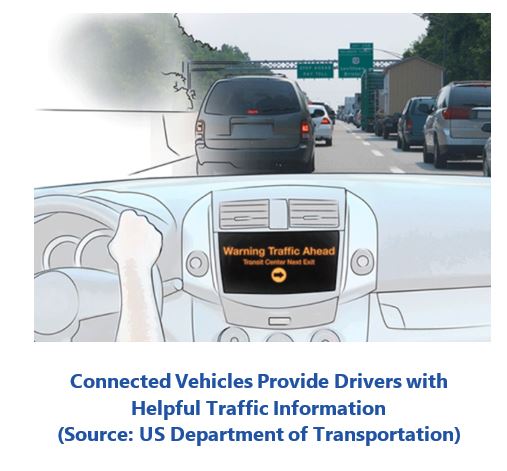

Safe, efficient, and reliable transportation of goods and people is essential for our global economy, whether it is by rail, road, water or air. To support economic growth and stability, we need to ensure that our transportation networks remain reliable and secure. Digitalization will help. Internet of Things (IoT) technology has the potential to boost operational efficiency, resulting in increased safety, security, and cost effectiveness across transportation networks. Wireless technology is emerging as the preferred form of modus operandi for many users. With the advent of 5G technology, it will become only more powerful.
The inception of the IoT devices has made it possible to connect objects from the real world to the virtual world. What are the advantages of this connection? In the virtual world you can simulate real life situations to be able to plan or predict outcomes. Frequent breakdowns of vehicles or infrastructure causes delays during commutes. While common in underdeveloped and developing countries, transportation breakdowns are not unknown in the developed world either, particularly in the older, more maintenance-prone metropolitan and regional rail networks. Disruptions in public transport systems has a cumulative effect on the overall functioning of a city or region due to breakdown in the transport network system.
IoT-enabled predictive asset management is one example of a technology that could help avoid such breakdowns and failures in transport networks. Using IoT systems to constantly monitor the different health parameters of vehicles or infrastructure can help identify potential problems in advance to enable the appropriate corrective measures to be taken before failure. This increases safety, reduces disruptions, and will lead to high uptime of services.
The impact of IoT on public transportation is improving commuters’ experience, helping operators to cut operational costs, and improving sustainability by promoting the use of public transport.
The first use case of IoT in transportation and logistics is fleet management. By embedding sensors and other smart devices in rolling stock and rail infrastructure, we can collect data regarding the behavior of these various assets. We can monitor the rolling stock and its assets on a real-time basis and acquire data on the situation. These data can be then analyzed to determine whether the assets meet established thresholds. If not in compliance with the asset management plan, the operators are alerted prior to failure, often in real time. This creates a buffer between predicted and actual failure, enabling operators to avoid actual failure by performing the appropriate repairs.
Wireless devices and connected applications also play a key role in the latest train control systems being implemented globally to help improve rail safety and throughput.
The transportation industry demands better communications among vehicles, infrastructure, and personal communications devices. As this industry is literally on the move, the technologies need to adapt at a fast pace, or our roads will become increasingly congested. This will slow the movement of people and goods, creating inefficiencies in our supply chain and increase commuter times on our roads. The key to unlock better efficiencies will lie in speed, data, and agility.
IoT devices can be installed in bus stations to collect and transmit data concerning the estimated time of arrival at the next destination. This is used for scheduling and traffic management. Commercial transport vehicles can be accurately tracked, which helps transport companies monitor the safety and security vehicles and cargo.

Connected vehicles provide drivers with a holistic view of the road and traffic by the power of understanding its environment. IoT-connected apps such as Google Maps and Waze help drivers optimize their routes with suggestions of congestion and alternative roads. This helps reduce traffic congestion and travel times, minimizing the environmental impact on congested roads. Intelligent traffic and driver management and data collection can be all executed via IoT devices.
Thanks to the sensors and algorithms that support lane departure notifications, advanced highway speed control, and emergency pre-braking and braking functions; semi-autonomous operation is already a reality in many passenger and some commercial vehicles. In the not-too-distant future, it’s likely that advanced sensors and even more powerful algorithms will enable IoT-connected vehicles to travel along public roadways autonomously. According to some experts, this should help support higher traffic densities on existing road networks and could also increase roadway safety by eliminating human error, not to mention the current bane of drivers increasingly distracted by their smart devices.
Eighty-percent of the world’s cargo is shipped by sea. In an ecosystem this widespread, we need utmost efficiency. Even now, crucial vessel location, cargo ID, maintenance, and port availability data are still being transmitted point-to-point. An industry that is the lifeblood of the global economy could certainly use additional modernization and digitalization. An entire ecosystem could benefit from extending IoT from land out to sea. Logistics assets and stakeholders throughout the supply chain can be connected to ensure each delivery is as efficient as possible, essentially transforming the marine transport industry.
ARC Advisory Group clients can view the complete report at ARC Client Portal
If you would like to buy this report or obtain information about how to become a client, please Contact Us
Keywords: IoT, Rail, Road, Aviation, Maritime, ARC Advisory Group.

